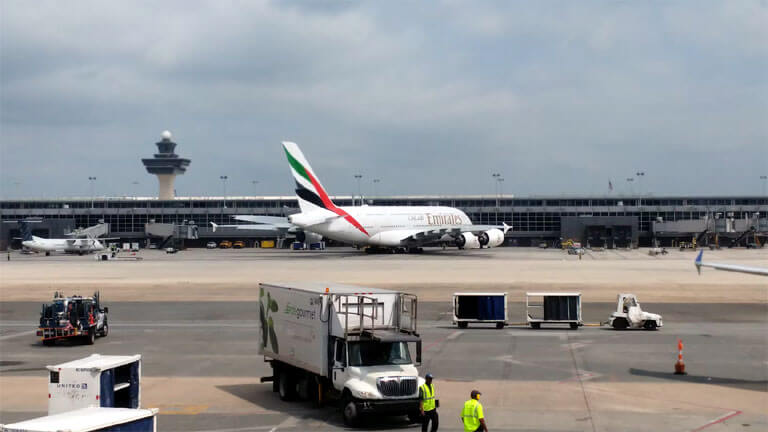
The realm of air travel is a complex symphony of coordinated processes, and standing behind every successful flight is an array of specialized equipment ensuring seamless ground operations. Aircraft ground support equipment (GSE) functions as the unsung hero of aviation, comprising various machinery and tools vital for aircraft maintenance, turnaround, and overall operational efficiency. This article will delve into the diverse categories of GSE and their applications that constitute the backbone of contemporary aviation.
Aircraft Towing Vehicles
Known as tugs, aircraft towing tractors are the workhorses responsible for aircraft movement on the ground. These robust vehicles, available in different sizes and capacities, are tailored to handle various aircraft, from regional jets to large commercial airplanes. Tugs facilitate the precise maneuvering of aircraft around the airport, enabling them to reach maintenance hangars, boarding gates, or designated parking areas. The shift towards electric and hybrid tugs is gaining traction due to their eco-friendly attributes and reduced operational costs.
Aircraft Deicing Equipment
Operating in diverse weather conditions, aircraft are susceptible to ice accumulation on their surfaces, posing safety risks. Aircraft deicing equipment, comprising deicing trucks and fluid spraying systems, plays a crucial role in removing or preventing ice buildup. These GSE units are vital in winter operations, ensuring aircraft surfaces are free from ice and snow, optimizing aerodynamics, and safeguarding the safety of flights.
Passenger Boarding Bridges
Passenger boarding bridges, known as jet bridges, are perhaps the most visible and iconic GSE at airports. These extendable walkways connect the airport terminal directly to the aircraft, facilitating passengers’ smooth boarding and disembarkation. Advanced jet bridges come equipped with features such as climate control, providing a comfortable transition between the aircraft and the terminal, and adaptable designs to accommodate various aircraft types.
Aircraft Lavatory Servicing Vehicles
Maintaining the hygiene and functionality of onboard lavatories is a critical aspect of ground operations. Lavatory servicing vehicles, equipped with specialized waste disposal and cleaning systems, are tasked with efficiently emptying and cleaning aircraft lavatories. These GSE units contribute to the overall cleanliness and comfort of the aircraft, enhancing the passenger experience.
Ground Power Units (GPU)
Ground power units (GPUs) play a crucial role in supplying electrical power to aircraft while they are on the ground, especially during pre-flight preparations and maintenance checks. GPUs, integral components of aircraft ground support equipment, provide the necessary energy to run aircraft systems, avionics, and climate control, reducing the reliance on onboard auxiliary power units (APUs) and conserving aircraft fuel.
In alignment with the growing emphasis on sustainability, modern GPUs are designed for energy efficiency and environmental friendliness, with some models incorporating alternative power sources such as solar or hybrid technologies.
Baggage Handling Systems
Efficient baggage handling is crucial for timely departures and arrivals. GSE involved in baggage handling includes conveyor belts, baggage loaders, and transport vehicles. These systems ensure the smooth transfer of luggage between the terminal and the aircraft hold, optimizing the loading and unloading process. Advanced baggage handling technology incorporates automation and tracking systems to minimize errors and enhance overall operational efficiency.
Aircraft Jacks and Stands
Aircraft maintenance and repairs often require lifting the aircraft off the ground for access to critical components. Aircraft jacks and stands are essential GSEs designed to support the aircraft securely during maintenance procedures. These units come in various types, including tripod jacks and axle stands, each tailored to the specific requirements of different aircraft models. Ensuring the safety and stability of the aircraft during maintenance is paramount, making these GSE units indispensable for maintenance crews.
Air Start Units (ASU)
Air Start Units are critical for initiating the engines of an aircraft while it is on the ground. These units supply compressed air to start the aircraft engines, allowing for a smooth and controlled ignition process. ASUs are particularly vital in situations where the aircraft’s APU is inoperative or during maintenance activities that necessitate engine starts on the ground. They come in various sizes and configurations to accommodate different aircraft types.
Conclusion
Aircraft ground support equipment takes center stage in the intricate ballet of air travel, ensuring the seamless coordination of ground operations. From the robust tugs guiding aircraft to their designated spaces to the sophisticated baggage handling systems managing the flow of luggage, each category of GSE plays a distinctive role in the aviation ecosystem. As the aviation industry continues to evolve, the development of more sustainable and technologically advanced GSE remains crucial for enhancing efficiency, safety, and the overall passenger experience.




